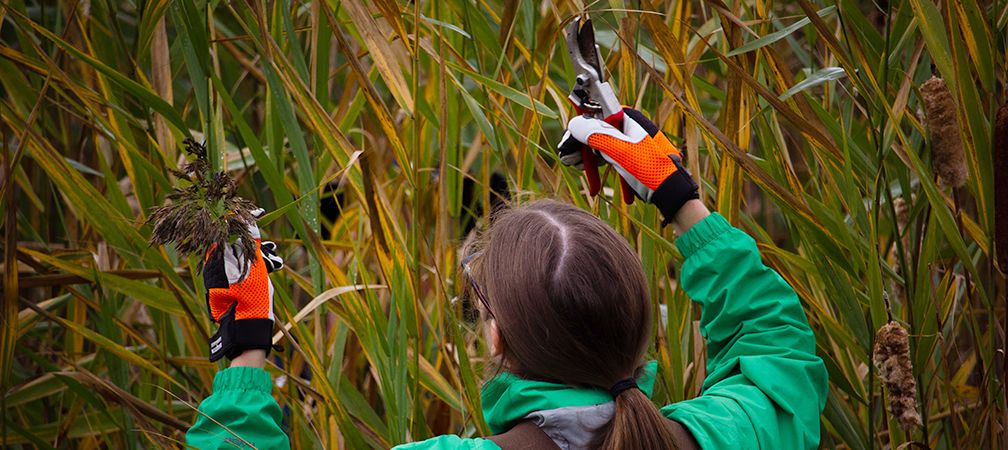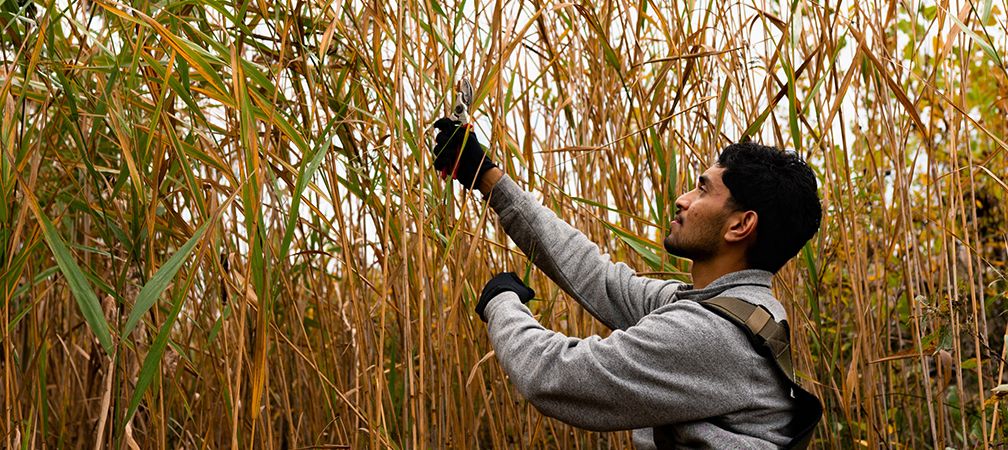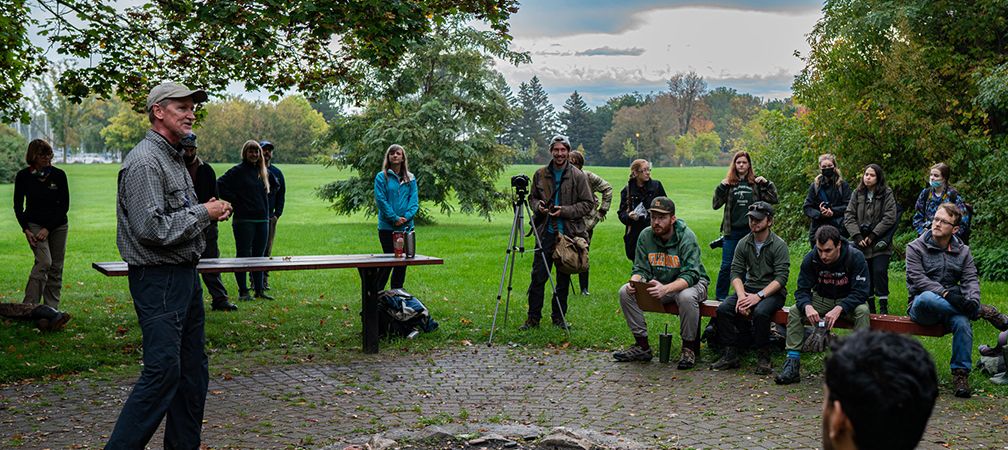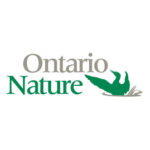Ontario Nature Blog
Receive email alerts about breaking conservation
and environmental news.
© Lora Denis
It’s a humid summer day in the city and there’s only one activity on your mind: visiting the Toronto Islands. You pack a picnic lunch and your friends meet you at the ferry. You’re thankful for the breeze during the ferry ride on this hot day in Toronto. Arriving at the Islands, you head to the beach, ready to throw your belongings down and run into the water – but wait – there is no sandy beach! The water has covered up the sand, and there is nowhere to sit down and enjoy the beach day you had planned. This is not just a dystopian story: it could be the future of the Toronto Island beaches if nothing is done to preserve them.
With over 1.25 million visitors to the Toronto Islands every year, this urban ecosystem is subject to anthropogenic impacts such as pollution, litter and habitat degradation. Re-imagining the connection between humans and nature is essential to the Islands’ future for everyone to enjoy; people, plants and animals alike. How can our interactions with the Islands restore them, instead of causing further damage? Learning about the land is a good way to start. From there, we can create new stories and experiences that promote healthy relationships between people and nature.

In Ontario, coastal sand dunes are a rare ecosystem that require care and restoration to maintain their health. Hanlan’s Point, lining the west coast of the Toronto Islands, is a great example – home to many plant species and diversity of wildlife. The beach, sand dunes, and native species all play a significant role in maintaining the integrity of this ecosystem. Sand dunes are a dynamic environment which few plants can thrive in. The native marram grass is well adapted to this frequently changing environment. However, it isn’t so well adapted to the impacts of humans. It only takes ten footsteps to kill the fragile marram grass. Not using boardwalks or designated paths to enter the beach area is detrimental to the health of sand dunes.
Through listening to the needs of nature, we can work to restore natural environments as a community. Hanlan’s Point is one of six Environmentally Significant Areas on the Toronto Islands, which the City of Toronto defines as “spaces within Toronto’s natural heritage system that require special protection to preserve their environmentally significant qualities.” Although human impacts can cause harm to this vulnerable habitat, with proper planning, positive human intervention can be instrumental for making positive change.

Since 2008, the City of Toronto has partnered with Fleming College’s Ecosystem Management Technology program to restore the habitat by closing trails, planting native trees and shrubs, transplanting marram grass, installing dune protection fencing and signage, and controlling invasive species. Over the course of thirteen years, the partnership has been successful due to extensive planning, studying and teamwork.
Last year, Ecosystem Management students from Fleming boarded a ferry to Hanlan’s Point beach for their annual visit, equipped with shovels, wading boots and positive attitudes. For many, it was their first time visiting the Islands. Students gathered and listened as professors Mike Fraser and Barb Elliot gave introductions and an overview of the plans for the day before taking action. The driving factor for this work stemmed from deep rooted care and attention to the needs of the changing environment.

Human care and concern for ecosystems sparks a chain reaction that can bring more involvement to restoration and protection efforts. Enriching and bridging human-nature relationships will ensure that Toronto’s cherished greenspaces will stay intact for future generations to enjoy. Before your next visit to the Islands, think about why you want to go. What makes you feel connected? What makes you care?
As Barb Elliot explains, “We conserve what we love and we love what we understand, […] so if we understand it, we will love it and then we want to keep it […] This is a really special place.”
By Cortney Gilbert and Marika MacLean

Cortney Gilbert is currently enrolled in the Environmental Visual Communication program at Fleming College, and has an undergraduate degree in Media Production from Ryerson University. Combining her media production experience and passion for wildlife conservation, Cortney aspires to create compelling visual storytelling content to foster change.

Marika is an aspiring documentary filmmaker and writer. Graduated from Environmental Studies from York University with a certificate in community arts, she is now a student of the Environmental Visual Communication program at Fleming College. Working together with the community, her goal is to bring to life and capture stories of the relationships between people and creation.

Proposed 413 Route, Old School Road with farm and escarpment view © Noah Cole
My comment addresses feedback above from May 31, 2022: “Regarding “Environmentally Significant Areas”—it’s important to balance management of such areas with the legitimate need of people in a megacity environment to have places for recreation”.
In Toronto, the Environmentally Significant Areas represent the most valuable natural areas protected for their exceptional natural features and ecological function. They are to preserve locally, regionally and even beyond rare native flora, wetland communities, significant wildlife habitats and the native species, provide for migratory birds and the species at risk. Total area of these special natural areas represents only about 4% on the city land. Ravines are about 17% for comparison. Protection is to ensure that conservation can take place and biodiversity is supported. Essential for these areas is to allow natural processes to proceed with as little disturbance as possible. Protection means managing natural areas for conservation which requires to prioritize nature over public use. As much as people are talking about “balancing act” between protection and use, in the ESA/ANSI/PSW allowing nature to thrive is a priority.
Unfortunately, people tend to think along anthropocentric perspective. Devon Page, the Ecojustice executive summed this well : “we continue along ideology that we can do everything at the same time in the same place without meaningful limit, and still expect to have intact forests, abundant wildlife and fish, a continuing supply of clean water”.
We are still in denial of the fact that our activities impact nature and wildlife as much as about the impacts of our best friends – dogs. We also choose not to see how the extracting recreational activities, such as fishing or hunting are among the foremost drivers of biodiversity loss. We tend to believe that “one dog does no harm” or along similar lines regarding paddling, fishing, taking informal trail, having a loud group in nesting area, etc. Our grasp of our human impacts somewhat fails to project that in the megacity hundreds of dogs, paddlers, fishers will use the same spot perhaps the very same day over and over. What about wildlife where should they go to forage and nest?
On comment above re Grenadier Pond:
“Grenadier Pond, another “Environmentally Significant Area”, is a good example of this. Kayaking is not permitted there, ostensibly for this reason—but that prohibition deprives park users of an excellent low-impact summer activity that had a long history there going back more than a century. Given a suitable window, there should be managed access to the waterbody.”
Grenadier Pond is the ESA/ANSI and recently received designation of Provincially Significant Wetland. It is a fairly shallow and small interior lake – one of the City of Toronto’s only remaining lakeshore marshes providing habitat to many species: numerous migratory birds, native turtles. muskrats, beavers, etc. The biggest threat represents recreational fishing due to the extensive number of by-catch (native turtles, migratory birds), pollution from fishing line, hooks lead, etc. disturbance to shoreline (nesting, trampling), introduction of organic pollution, depletion of top predators fish.
Grenadier Pond is very highly visited to the point of too intense unsustainable use. Just imagine that boating/paddling was allowed and additionally to all other use there were tens of people with their crafts all over the pond disturbing the very areas that are now refuge for the wildlife. Even a relatively low-impact activity becomes high impact if done by too many in a very sensitive habitat.
Biodiversity decline-extinction is real as much as climate change. It is high time that people re-evaluate their demands on nature in the city and beyond.
This is a very unique ecosystem within the highly urbanized City of Toronto. A huge shout-out to Fleming College, and City of Toronto, collaborating and engaging students to gain hands-on field experience, with enhancing and protecting these valuable areas.
Congratulations to all, and this is much deserved recognition!
Keep up the good work.
It’s nice to know there are people working to conserve this area.
One problem is the over crowding of the Island and people who have no respect for the rules.
Staying on the paths not littering ect.
I think a charge to use these areas would be effective. Maybe hire staff to enforce rules and
Monitor the area in general.
I see some parks where you reserve picnic areas if people had their ID recorded as to whom was using these spaces perhaps they’d be more respectful and accountable for their actions.
Perhaps some signage explaining the situation would also help.
People breaking the rules should face a fine or not permitted to use the park.
Maybe my views aren’t “WOKE” but it’s not like your cutting off peoples bank accounts.
They are not entitled to this park it is a privilege…. So respect it!
Regarding “Environmentally Significant Areas”—it’s important to balance management of such areas with the legitimate need of people in a megacity environment to have places for recreation. The pandemic has recently accentuated this need all the more.
Even efforts to conserve and restore can become imbalanced if done with an eye to reducing or prohibiting human activities: Grenadier Pond, another “Environmentally Significant Area”, is a good example of this. Kayaking is not permitted there, ostensibly for this reason—but that prohibition deprives park users of an excellent low-impact summer activity that had a long history there going back more than a century. Given a suitable window, there should be managed access to the waterbody.
Similarly, Hanlan’s Beach is the only beach in Toronto that faces into the prevailing SW winds: this is why it should always be managed as a prime swimming area in addition to being protected.